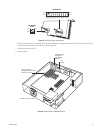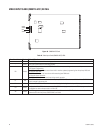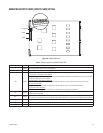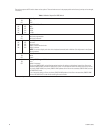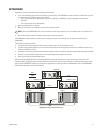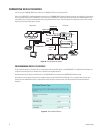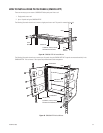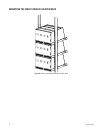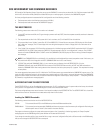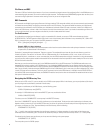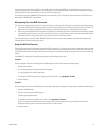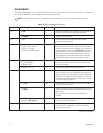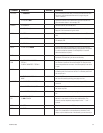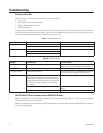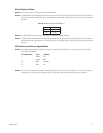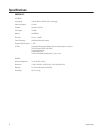
C1555M-F (10/05) 55
DOS ENVIRONMENT AND COMMAND REFERENCE
DOS stands for Disk Operating System. Every time you turn on the CM9700-CC1 or every time you reboot (Alt +Ctrl +Del), the computer loads DOS
from the CC1 disk into the memory (RAM). Once loaded DOS lets you run other programs, in particular, the CM9700.EXE program.
On factory-configured systems the autoexec.bat file is configured for one of the following scenarios:
• The boot process ends at the following system prompt (c:\9700>).
• The boot process loads and executes the CM9700.EXE program.
THE BOOT PROCESS
The following process occurs when the CC1 is turned on or is rebooted:
1. If turned OFF and then turned ON, the CC1 goes through a power-on self-test (POST). Here the computer essentially examines its electronic
components.
2. The computer looks at drive A for a DOS system disk. If one is not there, the CC1 will load DOS from its hard drive.
3. This process looks for two “hidden” system files: IO.SYS and MSDOS.SYS. If these files are not present, DOS displays the “Non-System
disk or disk error” message. (The CC1 also displays this error during the boot process if there is a floppy disk in the A drive that has no
system files).
4. If the “hidden” files are present, IO.SYS loads first and executes. An initialization program called SYSINIT contained within IO.SYS reads in
the MSDOS.SYS file; SYSINIT next locates the CONFIG.SYS file and executes its files for it to configure itself in memory. Then, SYSINIT
locates and invokes COMMAND.COM. If SYSINIT cannot find COMMAND.COM, DOS displays the “Bad or missing Command Interpreter“
error message.
5. If SYSINIT finds and loads COMMAND.COM, it, in turn, searches your root directory for the AUTOEXEC.BAT file. If it exits,
COMMAND.COM will cause the AUTOEXEC.BAT file to execute. If AUTOEXEC.BAT does not exist, the DATE and TIME commands are
invoked by COMMAND.COM. After entering date and time information, the basic system prompt (C:>) appears. This completes the startup
or boot process.
You cannot separate the boot process from CC1 initialization. The DOS boot process must succeed before the CM9700.EXE program can run. The
result of the DOS initialization process is that you either have a system prompt on a DOS screen or, as part of the boot process, the CM9700.EXE
program has been invoked. In the latter case, the System window of the diagnostic screen displays “Setup Complete…” if everything initialized
OK; otherwise, an applicable error message appears.
AUTOEXEC.BAT AND THE BOOT PROCESS
The AUTOEXEC.BAT file is the last file called during the boot process. For CC1s configured as part of a system node at the factory, the end result
of this process is the appearance of the CM9700 diagnostic screen on the attached VGA monitor.
The factory-configured boot process occurs because of the instructions added to the AUTOEXEC.BAT file. The AUTOEXEC.BAT file is a batch file,
which contains a series of instructions that are executed serially when the file is called.
Invoking the CM9700 Executable
The following commands are the last two in the AUTOEXEC.BAT file:
CD9700 This command directs DOS to the 9700 directory where the 9700 executable resides.
CM9700 Node1 This command starts the executable (CM9700) and directs the program to load into memory all configuration files having the
collective prefix name of “Node1” (also located in the same directory).
The program continues to configure the system environment and goes on line. If everything is functioning properly, the “Setup Complete”
message appears on the CM9700 diagnostic System Window on the attached VGA monitor.
If you change the name (the prefix) of your current flat files or copy a new set of configuration files (with a different name) to the 9700 directory,
then you must change the AUTOEXEC.BAT file to correspond.
NOTE: Since COMMAND.COM is not a hidden file, it is possible that it could accidentally be moved, corrupted or erased. If this occurs, you
may need to start DOS from a floppy disk and COPY COMMAND.COM into the CC1s root directory.



